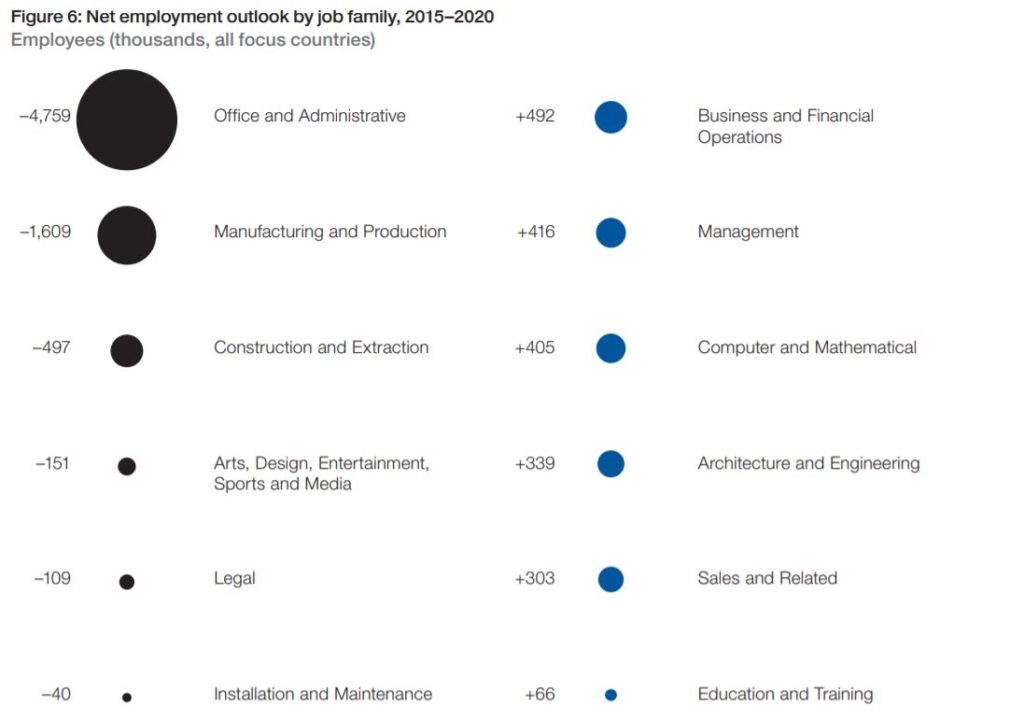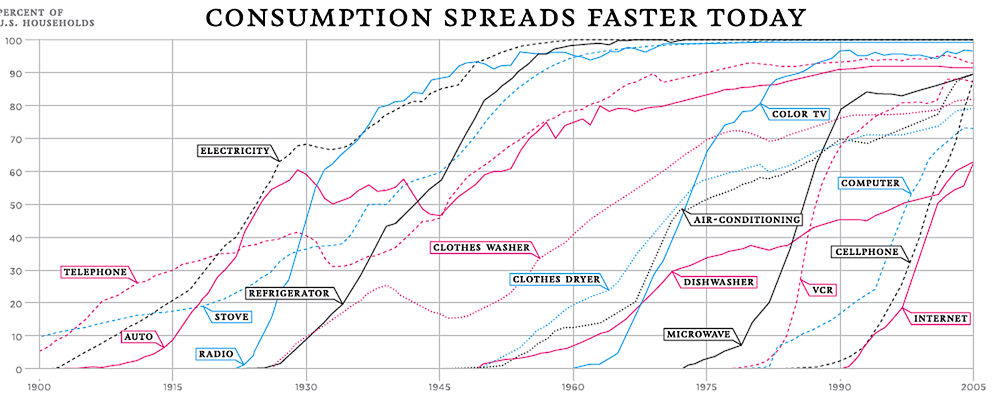Machine learning has the ability to automate a lot of jobs in the future. It is very easy to talk about this automation when it isn’t your job that will be automated. But the scary part is that there are a lot of highly skilled jobs that will also face some type of automation in the future as well. When you are talking about your own job potentially being automated, it becomes less abstract and more real. It is very easy to say go ahead and automate jobs, until it is your own that is being automated.
There needs to be a human element to the discussion around automation. We hear experts all the time discussing the pros and cons, yet what is lost in the discussion is the impact that it will have on society. The people that will lose their jobs are real people. They might be your family or your friends. They are real people that will have to adapt or risk being obsolete in the knowledge economy. In the past, there was a lot of fear about the industrial revolution taking away manual labor jobs. I would argue that this fear should be magnified, because we aren’t speaking in decades like we were when the industrial revolution started. The initial phase of automation is already beginning and will drastically accelerate in the next 5 – 10 years.
Why Automation
In order to understand why a job would be automated, you have to put on your business owner cap. A job is essentially considered an expense to your bottom line. There is a salary that has to be paid, along with benefits. Additionally, an employee might be sick or have to miss work for various reasons. When this happens, the work cannot get done at the same level of productivity. Multiply this across a medium to large enterprise, and you can see how expensive it can be to maintain a large workforce.
What if you didn’t have to pay these benefits? What if you had a worker that could work 24/7, didn’t get sick, never took time off, and didn’t have to pay healthcare for? If you’re a business owner, this sounds like the perfect employee. And it is for this reason why the automation of jobs is becoming a powerful force.
The World Economic Forum released their Future of Jobs report, in response to the rise of automation. Even over the next few years, jobs in these categories below will see positive or negative trends because of automation:

You’ll notice that many of the job employment trends are heavily negative, and that these negative trends aren’t just focused on jobs that we think of being more manual in nature (manufacturing and construction). It is a common misconception to think that only jobs that are less skilled or more manual will get automated.
A great example of a highly skilled job being automated is in the legal field. In any type of litigation, that are thousands of documents that have to be reviewed during the process. The document review process used to require a team of lawyers and paralegals to sift through everything. Now it can be done in a fraction of the time. This whole process is called the discovery process, where legal teams have to exchange documentation and other information. It used to be very time consuming, but with artificial intelligence it is now much faster. This could also make legal services much cheaper, which initially would increase demand for these services in the short term, but in the long term reduce the amount of lawyers needed.
Technology Adoption
So if machine learning is helping to automate even white collar jobs, it is only a matter of time before most people will be working with these algorithms in the future. This is both scary and exciting, depending on where you sit. I don’t think people realize how fast their jobs can be automated.
The best analogy is thinking about the technology adoption cycle and how quickly it has accelerated over the last century. Below is a comparison of how long each major technology in the 20th century took to be widely adopted in society:

Source: https://cdn.theatlantic.com/static/mt/assets/business/technology%20…
You’ll notice that earlier technologies took decades to reach an 80% adoption rate, while newer technologies get adopted at a much faster rate. The telephone took just over 60 years to reach the 80% adoption rate, while the cellphone took about 20 years. So an advanced technology that is is much more challenging to create and implement actually took 1/3 of the time to be adopted by so many people. Machine learning algorithms will work on this same scale, and that is why job automation will accelerate.
Job Automation
Take the push towards self driving cars. Initially, this started off as a DARPA experiment in the desert, and has now morphed into an emerging industry, pursued by players like Google, Uber and Tesla. Picture these funny looking robots back in 2005, struggling to make it across the desert 150 miles. Didn’t seem very promising at the time, as many of the cars were stuck on small rocks or just couldn’t make it the full distance.
Fast forward to today, where companies like Otto already had a self-driving semi truck make deliveries. Breakthroughs like this don’t look good if you are a truck driver. A lot of people are worried that cab drivers will be obsolete, but I think that truck drivers face a greater threat. Over 70% of all freight is moved by trucks, according to the American Trucking Association. Additionally, there are close to 3.5 million truck drivers in the U.S. If it took 15 years to have the widespread adoption of the internet, I think the move towards self-driving semi trucks will be faster. I don’t think that full 3.5 million jobs will disappear, but do think that there will be a lot fewer truck drivers over the next decade.
Semi drivers are but one category of worker that faces automation. In an Oxford study on The Future of Employment, they found that these job categories below have a 99% chance of being automated in the near future:
- Telemarketers
- Insurance Underwriters
- Tax Preparers
- Data Entry Keyers
There were may other professions that had very high risks of automation, but I’m focusing on these above to provide context. The Bureau of Labor Statistics provides estimates for how many people work in these job categories, and I’ve provided them below:
- Telemarketers: 216,000
- Insurance Underwriters: 92,000
- Tax Preparers: 70,000
- Data Entry Keyers: 195,000
So just with these four types of job, if automation were to fully take over, we’re looking at a loss of 573,000 jobs. These were a few of the jobs that had the highest risk of automation. If we were to go down the line from here, and start including the hundreds of other job categories, it wouldn’t be long until potential job losses from automation would be in the millions.
A World With Less Jobs
This isn’t a U.S. only phenomenon either, as there are a lot of jobs around the world that face risks from automation. The McKinsey Global Institute published a recent report on the potential for job losses due to automation, and forecasted what this could look like through 2030. Here is one of their summaries of the different scenarios below:
Overall, this paints a picture that even today, a lot of the work that each us do could be automated. We’re not talking about something over the horizon anymore and it makes this feel more real. The scariest part is that over a billion people could be impacted, either by having their jobs automated or by having to switch jobs to stay employed. Even though automation starts off slow, it begins to accelerate once companies see the benefits it brings.
There is a large range of people that would have to switch jobs if they don’t want their current ones automated. Below is a comparison across countries and around the world of what this looks like:
There are a lot of people in the U.S. and China that face this risk. Even though China has more people at risk, the U.S. has a greater percentage of it’s population at risk. These numbers are significant enough to potentially change the political structure of these countries. What would the U.S. do with a more than a quarter of it’s workforce facing unemployment?
The Future
I don’t know what is going to happen to all of these people whose jobs become automated. Some of them will find new employment, but many of them will be unemployable, particularly if they’ve been at the same job for decades. As more of these machine learning algorithms start to accelerate this automation, there has to be ideas of what to do with all of these people. You can’t have a healthy economy if your unemployment rate is 25%. There are many social and political implications of this, and the fact that these people will end up becoming dependent on government assistance in the future.
As we continue to focus on innovation and the truly amazing ways that machine learning can help our society, it is important to always remember the human implications of this.
Originally posted here


